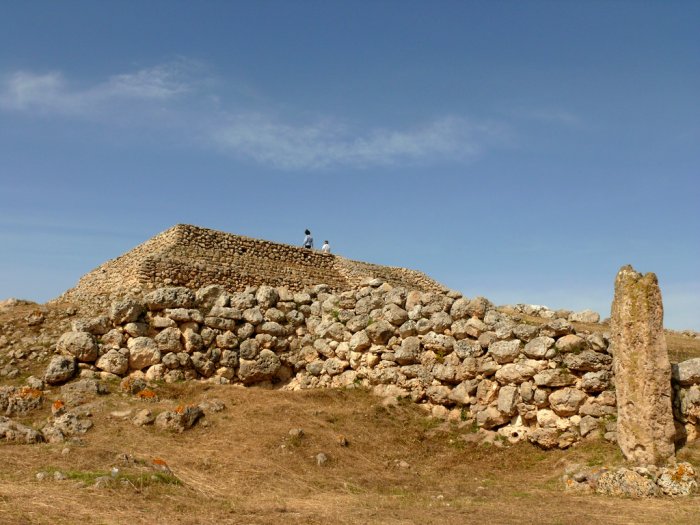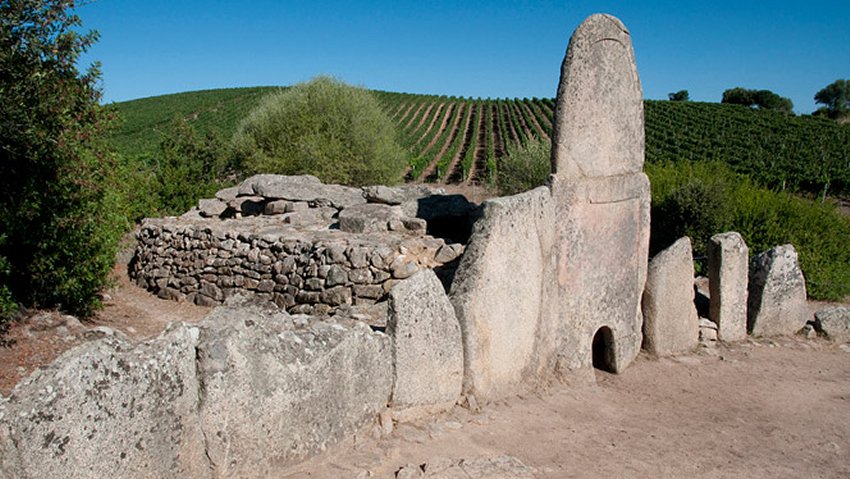Mystery Of Monte d’Accoddi: Was It An Ancient Step Pyramid, Altar Or Astronomical Observatory?
A. Sutherland - AncientPages.com - Located in the territory of Sassari near Porto Torres, in northern Sardinia, Italy there is an intriguing ancient site known as Monte d'Accoddi, which represents Sardinia's most impressive prehistoric shrine.
Monte d'Accoddi's ancient site contains an altar, a ziggurat, and a large structure that looks like an ancient temple, or perhaps a step pyramid, but it has not been confirmed. However, it has not been confirmed the structure is a pyramid. Scientists have also proposed it was once an altar, ziggurat, mound, or perhaps an ancient temple. The structure’s purpose has been widely debated.
Some scholars have also considered the possibility this place served as an ancient astronomical observatory. The structure has a base of 27 m by 27 m and probably reached a height of 5.5 m. It culminated in a platform of about 12.5 m by 7.2 m, accessible via a ramp.
In the 1960s, several archaeological excavations were conducted in the area of Monte d'Accoddi. The necropolis of Monte d’ Accoddi is formed by at least eight hypogea. Perhaps the most important of these is the Tomba I (Tomb I) or Tomba del Capo (The Chief’s Tomb), with nine cells placed in a rectilinear direction around a main central one.
In the main cellar placed on a lower level, there are two rectangular pillars similar in structure to a house. On the far wall, there is a false door placed between the entrances of two cells, one presents some frame moldings, and the other leads to a cell with a single pillar.
The pillar is adorned on one side by some schematic bovine forms (proteomes) that have been sculpted vertically, and on the other side by crescent moon-shaped bovine horns. Other crescent moon-shaped horns are found to the left of the entrance leading to two interconnecting cells.
Many mysterious carved stones in the vicinity . Near the south-eastern corner of the monument there is a dolmen, and across the ramp stands a considerable menhir, one of several standing stones found in the vicinity. This suggests the place was of great importance to people who lived here.
The oldest parts of the excavated site date to around c. 4,000-3,650 B.C. It is believed the mysterious structure was built by the Ozieri culture, a prehistoric pre-Nuragic culture that lived in Sardinia from c. 3200 to 2800 B.C. Similar menhirs have been found in the nearby Corsica, which attests to the strong influence of the Ozieri people and their traditions on a neighboring society.
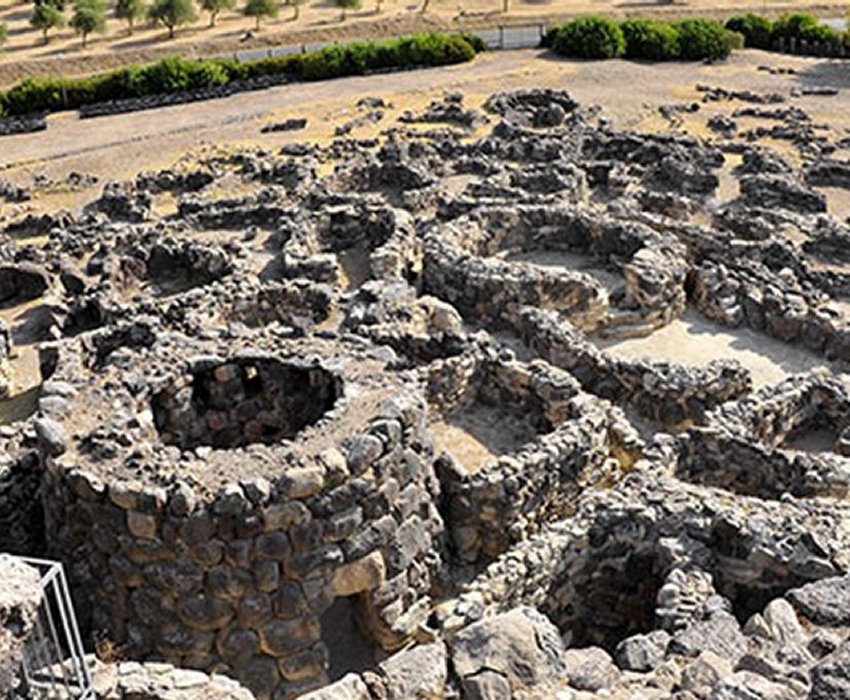
The largest nuraghic complex on the island, dated to ca. 1500 BC, is Su Nuraxi. It has been excavated since 1949, but its origins remain obscure
Sardinia holds many ancient secrets still waiting to be fully examined. On the island there are several mysterious stones and impressive, ancient towers called the nuraghi, which began to appear between 1900 and 730 BC. These beehive-like towers are still the island’s greatest mystery.
There are also a number of ancient massive tombstones constructed for unknown purpose and of course several unanswered questions concerning the Giants’ graves, or Tomba dei gigantic.
Monte d’Accoddi makes Sardinia’s past even more intriguing.
According to some scholars, Monte d’Accoddi should be considered among the most important architectural manifestations of Mediterranean prehistory.
There are not many ancient pyramids in Europe. Could the structure at Monte d’Accoddi really be considered a step pyramid? If so, what was its purpose?
Unfortunately, our knowledge of this ancient place is partial because of a limited scientific exploration of the area.
Written by – A. Sutherland - AncientPages.com Senior Staff Writer
Copyright © AncientPages.com All rights reserved. This material may not be published, broadcast, rewritten or redistributed in whole or part without the express written permission of AncientPages.com
Expand for referencesMore From Ancient Pages
-
 Thales Of Miletus: One Of The Famous “Seven Sages Of Greece” Who Predicted A Solar Eclipse
Featured Stories | Aug 12, 2016
Thales Of Miletus: One Of The Famous “Seven Sages Of Greece” Who Predicted A Solar Eclipse
Featured Stories | Aug 12, 2016 -
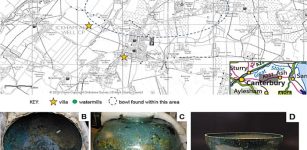 Modern Pesticide Accelerates Corrosion Of Ancient Roman Bowl
Archaeology | Oct 6, 2022
Modern Pesticide Accelerates Corrosion Of Ancient Roman Bowl
Archaeology | Oct 6, 2022 -
 Groundbreaking Discovery Reveals High Cognitive Abilities In Humans Who Lived 170,000 Years Ago
Archaeology | Feb 7, 2022
Groundbreaking Discovery Reveals High Cognitive Abilities In Humans Who Lived 170,000 Years Ago
Archaeology | Feb 7, 2022 -
 Beautiful Temple Dedicated To Ninhursag, Goddess Of Childbirth And Divine Protector Of Wild Animals
Civilizations | Jan 3, 2017
Beautiful Temple Dedicated To Ninhursag, Goddess Of Childbirth And Divine Protector Of Wild Animals
Civilizations | Jan 3, 2017 -
 Impressive And Rare Hoard Of Silver Coins Dated To The Hasmonean Period (126 BC) – Studied
Archaeology | Oct 14, 2021
Impressive And Rare Hoard Of Silver Coins Dated To The Hasmonean Period (126 BC) – Studied
Archaeology | Oct 14, 2021 -
 Gryla: Cannibalistic, Evil Troll And Her Sons ‘Yule Lads’ – In Icelandic Folklore
Christmas Traditions | Dec 23, 2024
Gryla: Cannibalistic, Evil Troll And Her Sons ‘Yule Lads’ – In Icelandic Folklore
Christmas Traditions | Dec 23, 2024 -
 When Did Humans Start Using Roads And What Civilization Built The First Paved Roads?
Archaeology | Oct 26, 2022
When Did Humans Start Using Roads And What Civilization Built The First Paved Roads?
Archaeology | Oct 26, 2022 -
 Samurai Swords: Katana And Wakizashi And Their Long Tradition
Ancient Traditions And Customs | Aug 6, 2018
Samurai Swords: Katana And Wakizashi And Their Long Tradition
Ancient Traditions And Customs | Aug 6, 2018 -
 Map May Confirm The Legend Of The Mysterious Lost Sunken Welsh Kingdom Of Cantre’r Gwaelod In The Black Book Of Carmarthen
Archaeology | Aug 21, 2022
Map May Confirm The Legend Of The Mysterious Lost Sunken Welsh Kingdom Of Cantre’r Gwaelod In The Black Book Of Carmarthen
Archaeology | Aug 21, 2022 -
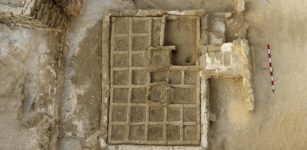 4,000-Year-Old Funerary Garden Found In Luxor, Egypt
Archaeology | May 9, 2017
4,000-Year-Old Funerary Garden Found In Luxor, Egypt
Archaeology | May 9, 2017 -
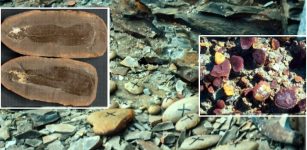 Illinois’s Mazon Creek: Recreating 300-Million Year-Old Ecosystem – Fossil Preservation And Diversity Of Life
Paleontology | Sep 16, 2025
Illinois’s Mazon Creek: Recreating 300-Million Year-Old Ecosystem – Fossil Preservation And Diversity Of Life
Paleontology | Sep 16, 2025 -
 Human Footprints Dating Back 800,000 Years Discovered In Norfolk UK
Archaeology | Feb 7, 2014
Human Footprints Dating Back 800,000 Years Discovered In Norfolk UK
Archaeology | Feb 7, 2014 -
 DNA Reveals Unique Ancestry Of Inhabitants Of The Angolan Namib Desert
DNA | Oct 3, 2023
DNA Reveals Unique Ancestry Of Inhabitants Of The Angolan Namib Desert
DNA | Oct 3, 2023 -
 Secrets Of Ark of The Covenant Revealed In Ancient Manuscript
Biblical Mysteries | Jul 19, 2014
Secrets Of Ark of The Covenant Revealed In Ancient Manuscript
Biblical Mysteries | Jul 19, 2014 -
 Smallest Arm Bone In Human Fossil Record Illuminates Homo Floresiensis Origin
Archaeology | Aug 7, 2024
Smallest Arm Bone In Human Fossil Record Illuminates Homo Floresiensis Origin
Archaeology | Aug 7, 2024 -
 Mystery Of The Copper Age ‘Ivory Lady’ Solved
Archaeology | Jul 6, 2023
Mystery Of The Copper Age ‘Ivory Lady’ Solved
Archaeology | Jul 6, 2023 -
 King Sanakht: Mysterious Ancient Egyptian Pharaoh Was A ‘Giant’ – Scientists Say
Archaeology | Aug 9, 2017
King Sanakht: Mysterious Ancient Egyptian Pharaoh Was A ‘Giant’ – Scientists Say
Archaeology | Aug 9, 2017 -
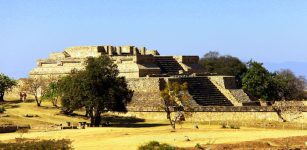 Why Do Some Cities Only Last A Century While Others Prosper For A Thousand Years Or More?
Archaeology | Mar 6, 2023
Why Do Some Cities Only Last A Century While Others Prosper For A Thousand Years Or More?
Archaeology | Mar 6, 2023 -
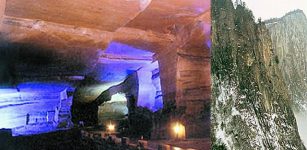 Incredible Technology In Mysterious Huashan Caves, China
Civilizations | Feb 10, 2015
Incredible Technology In Mysterious Huashan Caves, China
Civilizations | Feb 10, 2015 -
 Why Was Grette The Strong, Icelandic Poet And Warrior Afraid Of Darkness?
Featured Stories | Sep 30, 2023
Why Was Grette The Strong, Icelandic Poet And Warrior Afraid Of Darkness?
Featured Stories | Sep 30, 2023



